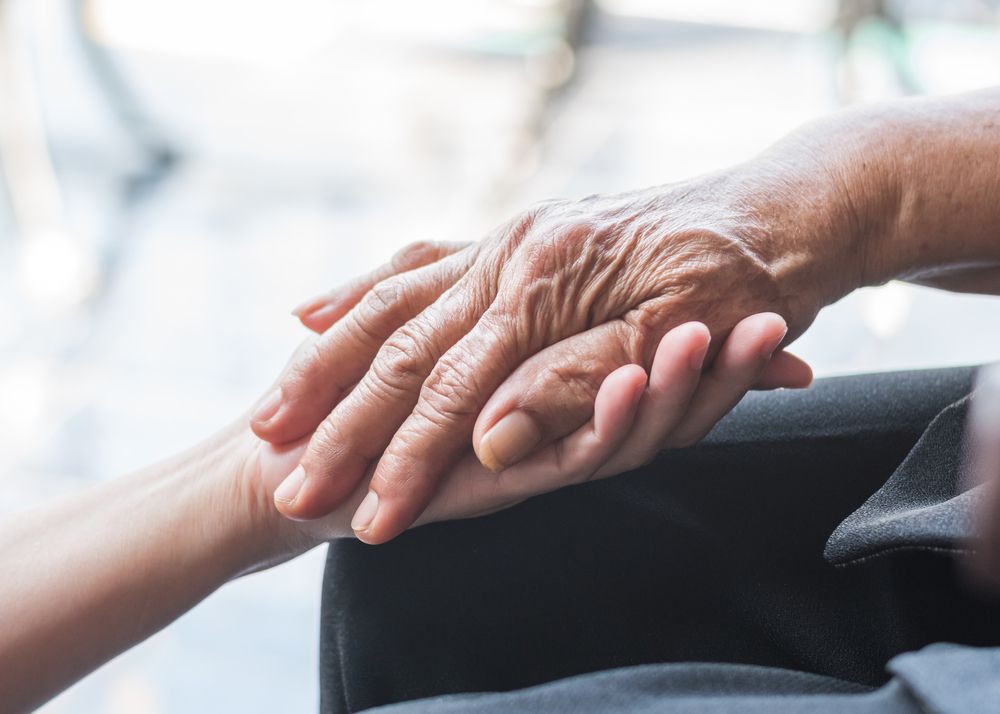Publication
Article
Psychiatric Times
Solace
Author(s):
My patient allowed me a glimpse into the suicidal mind. And, in that way, she taught me a lot.
Ker-thunk! Ker-thunk! Her metal cane thumped against the linoleum as she limped down the hall to my office. She was new in town, with severe situational stressors, and she was hoping to establish a relationship with a psychiatrist at the clinic. She’d been discharged from rehab only 2 months earlier, following an extended hospitalization for medical problems following a suicide attempt. She acknowledged ongoing depression with subclinical PTSD symptoms from the suicide attempt.
During one of our early sessions, I asked her to elaborate on her suicide attempt. She described, in detail, being on the roof of a 6-story building, looking over the side-no, too many trees, the branches would break the fall. The next side-no, she could get hung up in the electrical wires. A third side-no, kids were playing in the street, and she didn’t want to traumatize them. Finally, the fourth: perfect.
She described walking to the stairway entrance to the roof, kicking off her shoes and neatly arranging them next to the door. She described pausing, taking a deep breath. Then, a running leap, hurtling over the edge of the building. But in that brief moment, a car had parked next to the curb. She plummeted onto its hood, totaling the car and terrorizing the driver. She described the pain, and the memory of him kneeling over her, pleading, panic in his voice, to stay with him, to wait for the ambulance.
She was rushed to the hospital. Her multiple injuries required multiple surgeries, but she survived.
I was curious, wanting to know what had been going on in her head. At that time, I was processing the suicide of one of my own family members; more importantly, I wanted to understand her. How could a person willingly fling herself off the top of a building, in hopes of killing herself? Somewhat incredulously I asked, “What were you thinking?”
She appraised me without speaking, then nodded almost imperceptibly. Crossing her hands and laying them over her heart, she stared at the ceiling as she struggled for words. Slowly, emphatically, she replied, “I just hurt, here . . .” Her interlocking fingers tapped her chest, once, and her face winced at the memories. “I wanted it to end!”
“But what about your family, your kids?”
She shrugged sheepishly. “I wasn’t thinking of ANYTHING else-just how to make it stop!”
We talked about it again over the next few weeks. Each week, she discussed her ongoing stressors, including chronic pain from the surgeries and frustration from her new physical limitations. Each week, she insisted that she was coping adequately and maintaining her newly found sobriety. Each week, she denied further suicidal thoughts.
After about a month and a half, she missed an appointment. But she’d been rather flighty with her appointments, missing when scheduled and then showing up without notice. I wasn’t particularly concerned.
Then one day, the clinic social worker caught me in the hallway. “Ms. Davis is your patient, isn’t she?” I nodded, and her eyes brimmed with compassion. “I thought so. She committed suicide.”
* * *
The next week passed in a blur as the details emerged. My patient had alcohol and drugs, both legal and not, in her system. She’d taken herself to the top of a 20-story building. This time, when she jumped, there was no car to save her.
Within days, the whole clinic knew. One colleague approached me with horrified fascination, staring at me like I was the dissected earthworm in biology lab, and commented, “And you’re one of the good ones-no one thought this would happen to you, of all people!” Another colleague intoned, “I know you did the best you could,” unintentionally highlighting that my “best” simply hadn’t been good enough. Another colleague confided, “God, I just don’t know what I would DO if that happened to me!” And another quipped, “Well, they say that most psychiatrists will have a patient commit suicide-at least you’re done with your quota!” Sickened, I found myself distancing, pulling away from all but my closest friends.
My mentors staunchly supported me, and the risk management representative assured me that I wasn’t at fault. Still, I found myself replaying the last interactions in my mind, reaching for clues. Even with the certainty of hindsight I was baffled, unable to identify any telltale signs. I began to question myself as a psychiatrist-would I miss other clues, in other patients? Maybe I wasn’t cut out for this profession?
And through it all, I grieved the death of my patient, a person who had come to me for help.
* * *
Now, I view this encounter as a kind of gift, and I feel almost privileged to have met her. This patient, for all intents and purposes, should have been dead after her first attempt. This was no cutter, who scratched the skin whenever she had a fight with her boyfriend, or pill popper, who took 4 Tylenol and then insisted that family rush him to the hospital for his “suicide attempt.” No, her attempt had been coldly calculated and very nearly lethal. Yet she’d been insightful and intelligent, and she’d trusted me enough to confide in me.
She’d allowed me a glimpse into the suicidal mind. And, in that way, she taught me a lot.
I’ve learned not to be afraid to ask the sensitive questions: Are you having thoughts of suicide or of wanting to be dead? By doing what? What stops you? If you’ve tried in the past, how do you feel about not having succeeded? Sometimes patients seem taken aback, since it’s not considered socially acceptable to talk about killing themselves. But I ask calmly, clinically, like a gynecologist taking a sexual history. And, with rare exceptions, patients respond in kind. Most indicate that they’re not having suicidal thoughts, but some admit that they are. And some, with relief washing over their faces, thank me for asking, because they were afraid to bring it up. But if they can’t discuss suicide in a psychiatrist’s office, where can they?
I’ve now been privy to that horrible suffering-gut-wrenching soul pain, the kind that morphine or nerve blocks won’t touch. I’ve seen how that pain can be blinding, to cause an otherwise reasonable person to behave in ways that he or she might not even have previously considered, to forgo everyone and everything that’s held dear. That insight has given me an understanding of my own family history of suicide and allowed me some element of closure.
And I’ve learned that, even though I try my very hardest, not everyone can be saved. I’ve learned to accept, and to know that there’s no guilt in that. Only a resigned sadness.
* * *
It’s been years since her death. I did remain in the field of psychiatry, and I continue to treat patients for depression. And on a societal scale, I work to raise awareness of the risk of suicide: severe depression, if unaddressed, is a mortal illness.
But I still vividly remember her. Occasionally, in the elevator of a tall building, I feel a momentary chill as I push the button for my floor.
I wish her peace.
Editor’s Note:When Psychiatric Times held a writer’s contest last year, we invited readers to send us their story of one memorable patient who stood out-someone who taught them a valuable lesson and ultimately helped them become a better psychiatrist. The stories we received told of intimate bonds forged between doctor and patient under extraordinary and dire circumstances-tales of connections shared by 2 unique individuals that transcend medicine and run soul deep. Dr. Christianson’s essay was notable among the many memorable essays we received.
Disclosures:
Dr. Christianson is a Psychiatrist at Cedars-Sinai Medical Center in Los Angeles, specializing in solid-organ transplant patients.






